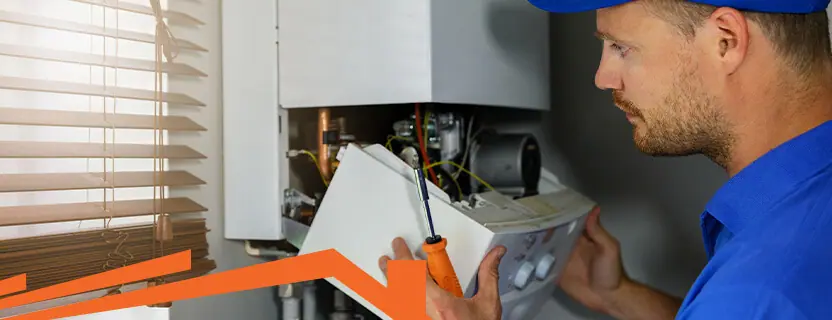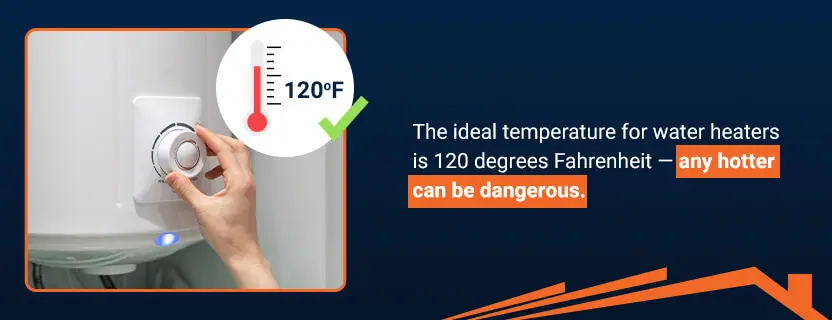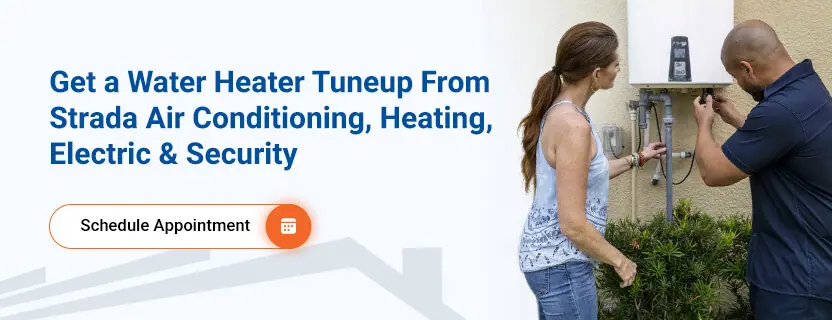
Maintaining your water heater extends its life span, ensures more reliable performance and may help you remain covered by any manufacturing warranties in effect. But keeping your unit in good operating order takes more than the occasional flush — here’s what you need to know.
Before you begin inspecting your water heater, be sure to:
Once you’ve completed these steps, you can begin following these best practices for water heater maintenance:
Turn the breaker for the heater off. Connect a hose to the drain valve at the bottom of the tank and run it outside. Open the drain valve and monitor the water flowing through the end of the hose. When the water is clear, turn off the valve and disconnect the hose. Turn the breaker back on.
Visually inspect your water heater tank for signs that indicate a leak, such as loose or broken connections and cracks in the exterior. While faulty connections are usually a simple fix, a cracked or heavily corroded tank may require total replacement. If you have inconsistent water pressure or see puddles of standing water, act quickly — even small leaks can drive up your water bill.
The anode rod is at the top of your water heater — it might be visible or may be secured under a top plate. Since this rod acts like a magnet for the oxygen particles in the tank, it’s a vital part of preventing corrosion.
You may need to unscrew the rod for a closer inspection. If its threads are worn or the rod is layered with mineral or sediment buildup, it’s time to replace it.
The temperature and pressure relief (TPR) valve is responsible for keeping the water heater safe despite the amount of pressure present inside the tank. It does this by draining water as needed to alleviate stress on the tank that could otherwise lead to an explosion or breakdown.
Before you inspect the TPR valve, position a bucket beneath it to catch any excess water that flows or trickles out. Carefully lift the valve tab to release water, which should start coming out immediately. The water should stop once you let go of the valve tab. If it doesn’t — or if no water comes out at all — a professional needs to inspect and replace it. In the meantime, partially drain the tank to alleviate pressure until the new valve is installed.
A functional thermostat is essential for maintaining a safe, consistent hot water temperature. Some electric units have more than one thermostat, so it’s not always obvious which one is causing temperature fluctuations. In most cases, the issue is simply an incorrect temperature setting that you can adjust on your own:

The ideal temperature for water heaters is 120 degrees Fahrenheit — any hotter can be dangerous. If you are comfortable with a lower temperature, lowering it by even a few degrees can make a significant impact on your energy bill.
Both the tank and pipes need sufficient insulation to maintain a consistent internal temperature. If you already have insulation, part of your regular maintenance checkup should be to assess the insulation’s condition and replace it as needed. Look for worn areas, loose adhesive or gaps in hard-to-cover spots like surrounding valves and panels.
If your unit is uninsulated, measure the diameter of the tank and pipes. Self-adhesive foam is usually suitable, but if you have a gas water heater, be sure to cover the pipes near the flue exhaust and heat source with a heat-resistant material like fiberglass. You may need to cut your insulation to size and add holes for each valve and panel.
An insulation blanket designed specifically for water heaters can also be helpful and will limit wasted energy and standby heat loss — just be sure not to cover the top of a gas unit, as this could disrupt combustion or create an unsafe environment.
If your water heater is 10 years or older or you notice one or more of the following, plan to perform a full maintenance inspection or schedule a visit from a professional:
If you’ve had to make several repairs or part replacements in recent years, it may be time for a new water heater — consult a professional first to be sure. Sometimes, what seems like a large problem might just require a simple fix. Remember, hesitating to address any of these warning signs could cause the problem to worsen, ultimately costing more money in the long run.
Even if your unit seems to be operating fine, regular water heater servicing is important for catching small problems before they escalate and preventing issues that could shorten your tank’s life span. We recommend the following maintenance schedule:
Keep a written maintenance log or track your inspection notes on your smartphone to track any changes in performance or condition that may warrant a closer look.
You can perform many hot water heater maintenance tasks on your own, such as:
Other services are safer when performed by a professional who is trained to spot small details that could indicate a larger problem, including:
The team at Strada Air Conditioning, Heating, Electric & Security have the training, experience and equipment necessary to diagnose and repair your water heater issues and perform regular inspections to keep your unit in good shape. Contact us today to schedule your visit.
